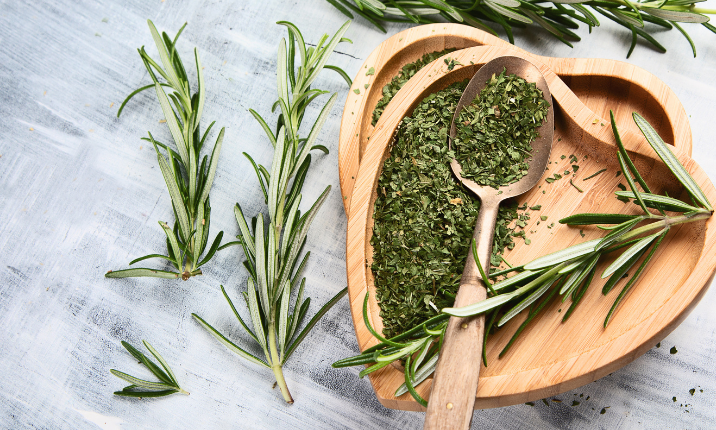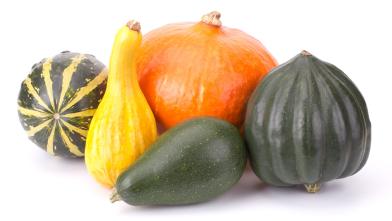
What Does Rosemary Taste Like?
Rosemary's flavor is robust. It has a unique blend of piney, earthy, and slightly minty notes. When cooked, rosemary imparts a warm, peppery essence. This hardy herb prefers a sunny, well-lit area inside on a windowsill or outside in a container. The best time of year to grow rosemary is the milder months of late summer and early fall. Yet it is commonly used during the colder months in hearty soups, stews, roasts, and more.
Is It Better to Use Dried or Fresh Rosemary?
Fresh rosemary has a more vibrant and aromatic flavor. With herbal and pine-like notes, it's ideal for dishes where its taste and fragrance can shine through. Try using fresh rosemary on roasted meats and stews.
Dried rosemary, on the other hand, has a more concentrated and slightly milder flavor. The dried version is more suitable for dishes with longer cooking times. Use dried rosemary in recipes for slow-cooked sauces or soups. This type of cooking allows it to release its flavors gradually.
The Benefits of Using Rosemary When You Have Diabetes
Rosemary is a rich source of antioxidants and anti-inflammatory compounds. This can help boost the immune system and improve blood circulation. Rosemary also contains essential vitamins like Vitamin C, Vitamin B6, and folate. Minerals such as calcium and magnesium are also found in rosemary. Some studies even suggest that rosemary may help improve memory and focus. This has lead to it receiving the nickname of the "herb of remembrance."
Including rosemary as a flavor enhancer in foods can be especially beneficial for those with diabetes. Rosemary not only elevates the taste of foods, but it also offers antioxidant properties that can support overall health. By using rosemary as a primary seasoning, people with diabetes can reduce the need for high-sodium or sugary condiments.
Ideas for Using Rosemary in Your Cooking
Incorporating rosemary into your meals is a great way to add depth and dimension to your dishes! Here are some ways to use this versatile herb:
- Roasted vegetables: Toss your favorite vegetables in olive oil, sprinkle with salt, pepper, and finely chopped rosemary. Roast until tender and golden.
- Infused oils: Add a sprig of rosemary to a bottle of olive oil. Let it sit for a week, and you'll have a fragrant oil perfect for salads and drizzling over dishes.
- Grilled meats: Before grilling, marinate your meats with a rosemary, garlic, and olive oil paste for a Mediterranean touch.
- Flavored popcorn: Toss popcorn with melted butter and finely chopped rosemary for a gourmet movie night snack.
- Pasta sauce: Add a sprig to homemade pasta sauce for a different flavor profile.
The Takeaway
Rosemary’s distinctive flavor profile, combined with its antioxidant power, makes this herb ideal to use year-round. Use rosemary with chicken, pork, steaks, and especially oily fish like salmon. For individuals managing diabetes, the integration of rosemary into their diet offers the benefits of enhancing meal flavors while potentially aiding in overall health management.
Diabetes-Friendly Rosemary Rich Recipes

Roasted Cherry Tomatoes with Rosemary & Garlic served on toast is a simple and flavorful dish that makes for a delicious diabetes-friendly appetizer. This is an easy recipe that features the bright colors and flavors of roasted tomatoes with fresh rosemary and fragrant garlic.

Smoked Paprika Beans with Rosemary & Olives
Smoked Paprika Beans with Rosemary & Olives is a flavorful and aromatic dish that combines the smokiness of paprika with the earthy notes of rosemary and the salty richness of olives. This diabetes-friendly side dish will take your beans to the next level and is easy enough to prepare for a weeknight meal.

Orange Rosemary Glazed Salmon with Broccolini
This Orange Rosemary Glazed Salmon with Broccolini is a tasty combination of citrusy, herby, and savory flavors. It's a healthy and elegant dish that's perfect for an easy weeknight dinner.














